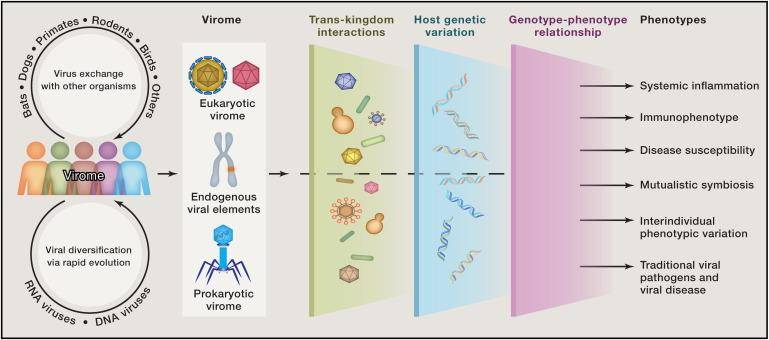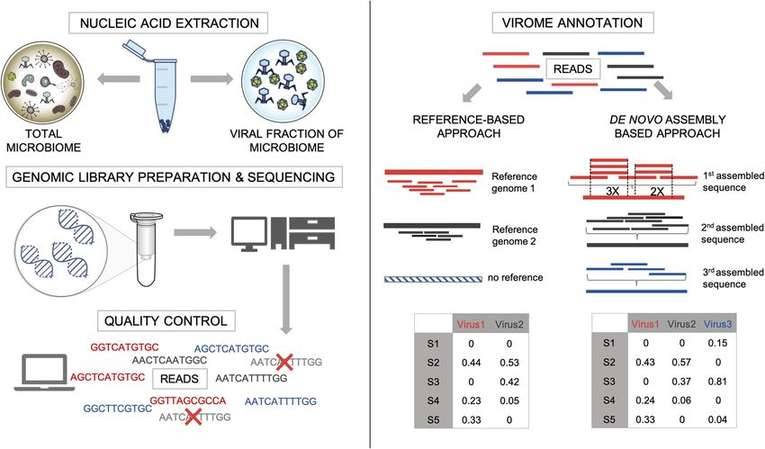Viruses
Viruses, these minuscule and seemingly simple structures, are garnering increasing attention from scientists worldwide. With their unique characteristics and profound impact on living organisms, viruses are a source of fascination and complexity that extend far beyond their diminutive size.
They are composed of a nucleic acid core, either DNA or RNA, encased within a protein coat. Unlike cellular organisms, viruses lack the essential cellular machinery for independent replication. Consequently, they must parasitize living cells to reproduce, effectively hijacking the cellular machinery of their hosts. This parasitic nature fuels their proliferation in a replicative manner, often causing diseases in their host organisms.
Viruses can be broadly categorized into six main groups:
- Double-Stranded DNA Viruses: These viruses possess a double-stranded DNA genome and rely on host cellular machinery for replication.
- Single Positive-Stranded DNA (+ DNA) Viruses: Their single-stranded DNA serves as a template for creating a complementary strand.
- Double-Stranded RNA Viruses: These viruses carry a double-stranded RNA genome, which can be used directly as a template for protein synthesis.
- Single Positive-Stranded RNA (+RNA) Viruses: Their single-stranded RNA is directly used as messenger RNA (mRNA) for protein synthesis.
- Single Negative-Stranded RNA (-RNA) Viruses: The single-stranded RNA genome of these viruses needs to be converted into a usable form before protein synthesis.
- Retroviruses: These unique viruses utilize reverse transcription to convert their RNA genome into DNA, which is then integrated into the host genome.
Virome Research
In the realm of microbiology, the study of viruses has undergone a transformative shift with the emergence of virome research. This discipline is aimed at comprehending the intricate tapestry of viral diversity present in various environments. While virome research shares some commonalities with metagenome and amplicon technologies, it also possesses distinct features and faces unique challenges that set it apart.
 Components of the Virome and Their Relationship to the Genotype/Phenotype Relationship. (Virgin, 2014)
Components of the Virome and Their Relationship to the Genotype/Phenotype Relationship. (Virgin, 2014)
Commonalities
- Sample-Based Analysis: All three technologies—virome, metagenome, and amplicon—are built on the foundation of studying microbial DNA within a sample, avoiding the need for microbial isolation, cultivation, or purification.
- Genomic Information: These approaches capitalize on genomic information present within the sample, allowing researchers to gain insights into the genetic makeup of the microorganisms inhabiting the environment.
Differences
- Virome Complexity and Extraction Challenges: Virome research focuses specifically on viruses and virus-like particles within a sample. Unlike bacteria, viruses lack consistent genetic markers and display rapid genetic evolution. Virome researchers often encounter challenges in the enrichment and extraction of viral genetic material, with extraction success rates typically low, adding a layer of complexity.
- Compositional Analysis: Virome technology seeks to unravel the diversity of viruses present in a sample, providing crucial information for virus discovery, tracing viral sources, and microbial early warning systems. This is distinct from metagenome technology which involves studying the entire microbial community present, and amplicon technology which amplifies and analyzes specific regions of microbial DNA, often employed in microbial community structure analysis.
- Data Proportions and Discrimination: In virome research, while analyzing sequencing data, a substantial proportion is often attributed to host and bacterial genetic information, which can overshadow the viral component. Distinguishing between viral and bacterial reads becomes a challenge, impacting the effective utilization of data. In contrast, metagenome and amplicon technologies tend to focus more specifically on microbial genomes.
- Taxonomic Diversity: Viruses exhibit a vast array of genomic diversity compared to bacteria, archaea, and other microorganisms. This diversity poses challenges in the classification and identification of viral species, as they lack universally conserved genes.
- Research Applications: Virome research plays a pivotal role in uncovering viral diversity, tracing sources of infection, and identifying potential pathogens. Metagenome technology, on the other hand, provides insights into the broader microbial community dynamics, while amplicon technology often aids in understanding microbial community structures and interactions.
In essence, virome research stands as a dynamic and evolving discipline that opens windows into the hidden world of viruses. Its distinctive challenges, such as low extraction rates and the prevalence of host and bacterial reads, require innovative approaches for data analysis and interpretation. This field not only contributes to our understanding of viral diversity and evolution but also holds promise for applications in public health, environmental monitoring, and disease prevention.
Applications of Virome Sequencing
The emergence of virome sequencing has opened up a world of possibilities, allowing researchers to delve into the hidden dimensions of viral diversity and its profound implications. This groundbreaking technology holds immense promise across a spectrum of applications, ranging from human health to ecological dynamics, pathogen tracing, and beyond.
 The steps in metagenomic study of the virome. (Garmaeva et al., 2019)
The steps in metagenomic study of the virome. (Garmaeva et al., 2019)
- Human Health Insights: The human body, a complex ecosystem in itself, is host to an array of viruses that play crucial roles in health and disease. Virome sequencing offers a unique lens through which researchers can explore the diverse viral communities residing within different tissues of the human body. By studying the viromes of specific anatomical sites—such as the intestines, oral cavity, and feces—scientists can unravel the intricate relationships between these viruses, the host, and human health. This exploration might reveal potential links between viral composition and certain health conditions, paving the way for innovative diagnostic and therapeutic strategies.
- Environmental Dynamics: The Earth's various ecosystems—ranging from soil and water to marine environments—are teeming with viral life that intricately interacts with the surrounding environment. Virome sequencing allows scientists to map out the viral compositions within these ecological niches, providing insights into the intricate relationships between viruses, microbial communities, and the larger biochemical cycles of our planet. By understanding the roles that viruses play in these ecosystems, researchers can potentially harness their capabilities to address environmental challenges, such as nutrient cycling and microbial diversity preservation.
- Pathogen Tracing and Disease Outbreaks: In the wake of emerging infectious diseases, the ability to trace the origins and pathways of viral pathogens becomes paramount. Virome sequencing can act as a powerful tool for uncovering the sources of viruses and tracking their movements. This is especially relevant in the context of zoonotic diseases, where viruses jump from animals to humans. By studying the viromes of animals, humans, and the environments they share, researchers can gain insights into potential transmission routes and develop strategies for disease prevention and control.
- Microbial Early Warning: The rapid detection of viral pathogens is crucial for preventing disease outbreaks and safeguarding public health. Virome sequencing offers the potential to serve as an early warning system for emerging viral threats. By continuously monitoring the viromes within various ecosystems—such as agricultural fields, water sources, and animal populations—scientists can detect viral diversity and abundance shifts that may signal new pathogens' emergence. This proactive approach could enable faster responses to potential outbreaks.
- Host-Virus Interactions: Understanding the intricate interplay between viruses and their host organisms is a cornerstone of virome research. By studying the effects of viruses on microbial communities, researchers can elucidate how viruses shape ecosystems and influence the dynamics of host populations. This knowledge enhances our understanding of fundamental ecological processes and has applications in agriculture, conservation, and ecosystem management.
References:
- Virgin, Herbert W. "The virome in mammalian physiology and disease." Cell 157.1 (2014): 142-150.
- Garmaeva, Sanzhima, et al. "Studying the gut virome in the metagenomic era: challenges and perspectives." BMC biology 17.1 (2019): 1-14.
For research purposes only, not intended for clinical diagnosis, treatment, or individual health assessments.


 Sample Submission Guidelines
Sample Submission Guidelines
 Components of the Virome and Their Relationship to the Genotype/Phenotype Relationship. (Virgin, 2014)
Components of the Virome and Their Relationship to the Genotype/Phenotype Relationship. (Virgin, 2014)  The steps in metagenomic study of the virome. (Garmaeva et al., 2019)
The steps in metagenomic study of the virome. (Garmaeva et al., 2019) 